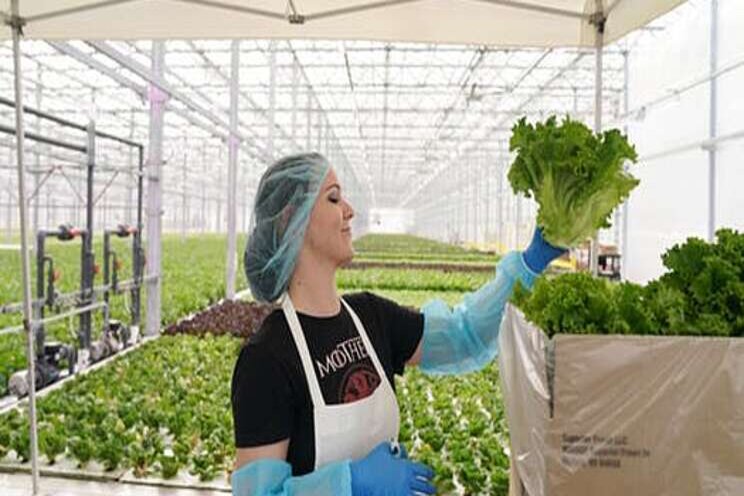Huge operation of aquaponics
Added on 14 March 2020

But Superior Fresh is not just another player in the nature-defying business of growing produce all year in the Midwest. It runs the nation's, and likely the world's, largest aquaponics facility, raising vegetables and fish in a way that benefits both.
Next to its greenhouse is a fish house where 600,000 Atlantic salmon swim in giant tanks. Sharing a closed-loop water system, the fish fertilize the greens, and the greens filter water for the fish.
"We're producing about 30 times more produce per square foot than traditional organic farming," Brandon Gottsacker, president of Superior Fresh, says.
Built in 2015, the farm first reached its full output in 2018 and last year produced 3 million pounds of greens and about 200,000 pounds of salmon. Both were sold to groceries and restaurants, and ultimately consumers, throughout the Midwest.
The farm's owners, members of the family that owns Ashley Furniture in Arcadia, Wis., aim to double its size and production this year. Even then, Superior Fresh will produce just a tiny fraction of the nation's demand for leafy vegetables and salmon.
But as it tests the prospect for fish farming in the landlocked Midwest, Superior Fresh's grand experiment raises an intriguing question that, for now, can't be answered: How many other Midwest farmers can follow its path?
"I've been working with some dairy farmers in Wisconsin, who have reached out and asked how much retraining would they need to convert from a dairy farm to a fish farm," said Chris Hartleb, professor of fisheries biology and co-director of the University of Wisconsin-Stevens Point Northern Aquaculture Demonstration Facility.
Aquaponics is heralded as a sustainable, local solution for a future where resources are under increased strain from a ballooning global population.
"There are very few places in the world where you can actually put salmon farms into the oceans, and those areas are kind of tapped out now," said Christopher Good, director of research at the Conservation Fund's Freshwater Institute. "But the demand keeps rising, so the solution has to be land-based and I think the major salmon companies are starting to realize that."
Hartleb said he sees nothing but growth in aquaponics. "More and more we are realizing that we have very little food safety and control over our food. Most of that risk is eliminated in aquaponics," he said.
But it's an expensive business to start and a difficult one to sustain.
Pentair shuttered Urban Organics' tilapia-and-greens plant in St. Paul last year without explanation. Some farmers and entrepreneurs have found that focusing solely on either plants — through a system called hydroponics — or the fish, called aquaculture, is easier to manage.
"You have to achieve a certain size to become commercially viable. Prior to that it's a hobby or side business," Hartleb said. "But to start out at that large size you have to have private financial backing because banks aren't willing to take the risk."
There are a fair number of what Hartleb calls "medium-sized" aquaponic farms in operation that support two to three employees and largely serve local markets. These are financial viable because they keep their costs in check with their smaller output.
"Most people getting involved with commercial aquaponics lack the farming background and this can lead to failure," Hartleb said. "Current farmers have that experience, so they would just need to learn about water-based aquaponics."
The owners of Superior Fresh decided to go big. The company spent $30 million on the first phase alone. The current expansion is phase three.
They invested in expensive systems that ozonate (adding oxygen) and filter the water with ultraviolet light as it returns to the fish. The farm also constantly monitors and tests water for pathogens, temperature and other crucial factors. It has backup pumps for their backup pumps, and generators powerful enough to keep the whole operation running if the power went out.
The farm produced its first harvest of lettuce about a month after opening in 2017. That brought revenue as salmon grew to harvest weight, which took two years.
Click here to read the complete article.
Photo Credit: ANTHONY SOUFFLE - STAR TRIBUNE
Source: Star Tribune
More news















